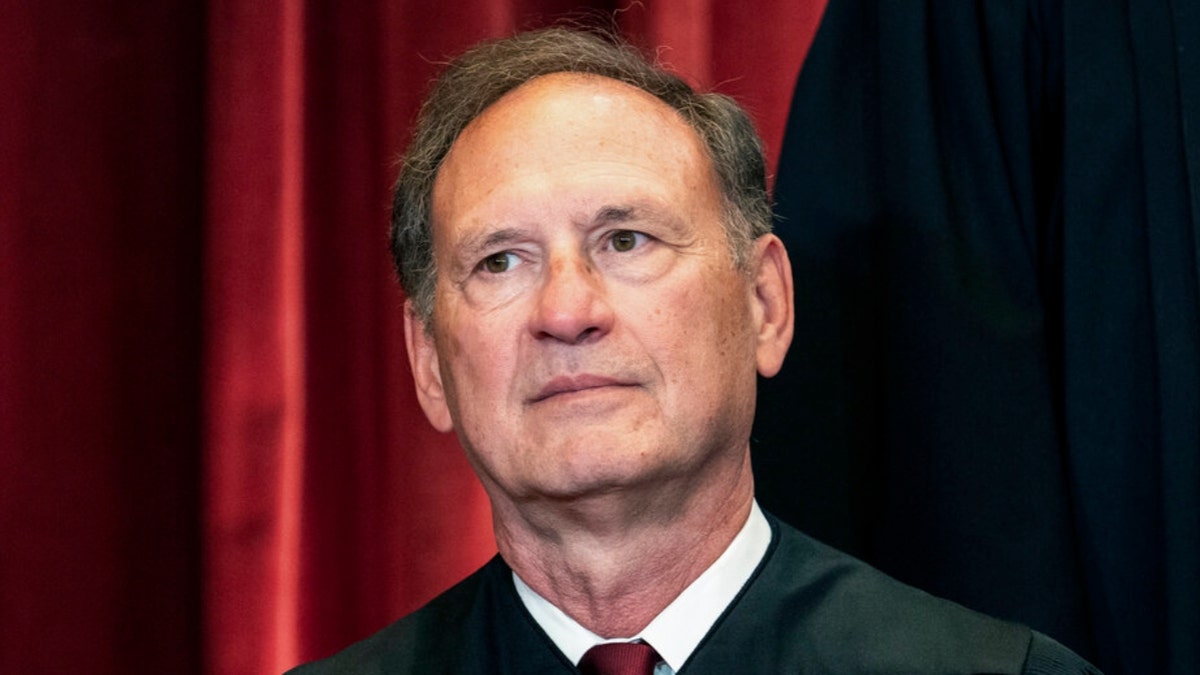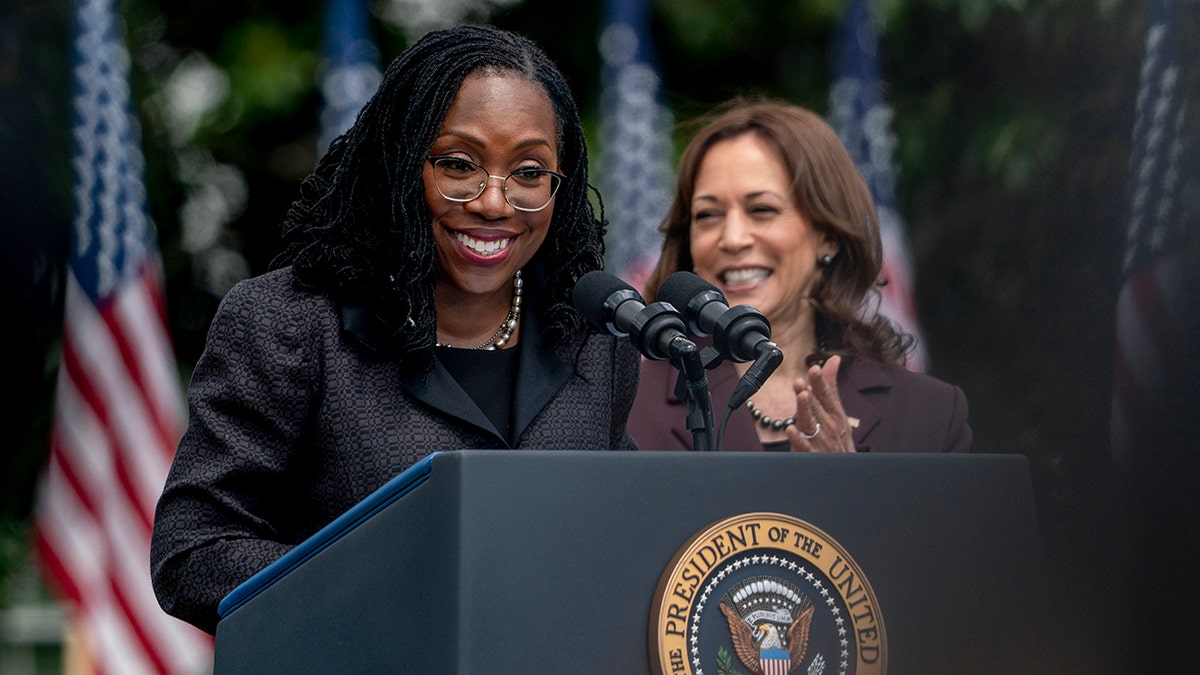Kamala Harris targets the Supreme Court in NBC interview
'The Big Weekend Show' panelists react to the vice president attacking 'activist' Supreme Court.
As the Supreme Court begins its new term, it does so against the backdrop of overturning Roe v. Wade and correcting one of the greatest acts of judicial arrogance in history. After the unprecedented leak of Justice Samuel Alito’s opinion in Dobbs v. Jackson Women’s Health Organization, which led to throngs of left-wing protestors illegally descending upon justices’ homes — and even an assassination attempt against Justice Brett Kavanaugh — it took tremendous courage for the five justices in the majority to follow the law in the face of an all-out intimidation campaign.
And nearly five months after the Dobbs leak, the intimidation campaign continues at full speed. The barrage of liberal attacks nefariously questioning the institutional legitimacy of the court to advance a court-packing pipe dream is non-stop. As are the streams of left-wing protestors who continue to harass the justices at their homes, showing no signs of relenting. And why would they, when Attorney General Merrick Garland has shown zero appetite for enforcing federal law?
Despite the intensity of the left’s campaign to delegitimize and undermine the court, expect the justices to do more of what we saw last term: keep their heads down and look to the original meaning of the Constitution and the text of statutes to follow the law where it leads. In so doing, this next term brings the promise of much-needed clarity to several important areas of the law.
WASHINGTON POST HERALDS NEW SCOTUS TERM BY TOUTING LIBERAL JUSTICES BASHING ITS ‘RIGHTWARD TURN'
In one of the highest profile cases this term, Students for Fair Admissions v. President and Fellows of Harvard College and Students for Fair Admissions v. University of North Carolina, the court will consider whether universities may use race as a factor in admissions consistent with Title VI of the Civil Rights Act of 1964 and the Fourteenth Amendment’s Equal Protection Clause.

The unprecedented leak of Justice Samuel Alito’s abortion opinion set off months of partisan attacks on the Supreme Court from the left. ((Erin Schaff/The New York Times via AP, Pool, File))
The court has grappled with this issue for decades. Its fractured 1978 decision in Regents of the University of California v. Bakke effectively allowed universities to consider race if doing so advanced "diversity" in the student body. Twenty-five years later, the Court in Grutter v. Bollinger reinforced that notion in an opinion by Justice Sandra Day O’Connor that oddly stated that it expected racial preferences would no longer be necessary in another 25 years.
We have not yet reached that mark, and it is clear the decision has not aged well. In its implementation, the universities’ use of race has translated into penalizing Asian-American applicants more than any other group.
This term’s expected resolution of the issue is a long time coming, and the delay came in part because of an about-face by Justice Anthony Kennedy, who after years of voting to strike down such discrimination voted the other way in Fisher v. University of Texas (2016).
The issue of race will also come up in Merrill v. Milligan and Merrill v. Caster, where a lower federal court ordered Alabama to redraw its new congressional map after calling it a racial gerrymander. The Supreme Court stayed that order and will determine whether the map violates the Voting Rights Act.
State judicial activism in the area of redistricting is on the docket in Moore v. Harper. There the North Carolina Supreme Court conjured a non-existent state rule against partisan gerrymandering and then created its own congressional map. There is much fearmongering from liberal activists about this case, but it is straightforward about reining in an out-of-control court that flouted the constitutionally mandated role of the state legislature in regulating elections.
Another issue the court is being asked to clarify concerns whether the government can compel people with religious objections to participate in same-sex weddings. The issue was decided in favor of a baker with such an objection in Masterpiece Cakeshop v. Colorado Civil Rights Commission (2018). But the facts of that case included brazenly hostile statements by state officials that are not to be expected in every case, leaving some courts to apply the precedent in a limited way. 303 Creative LLC v. Elenis will squarely present the question of whether, as a matter of free speech, a graphic designer with similar beliefs can be compelled to create a website for a same-sex wedding.
CLICK HERE TO GET THE OPINION NEWSLETTER
Also having the ring of déjà vu is Sackett v. Environmental Protection Agency, involving litigants who were before the Court 10 years ago. The EPA prohibited the Sacketts, an Idaho couple, from building a home on their land, contending that the property contained "navigable waters," defined as "the waters of the United States" (WOTUS), that subjected it to federal regulation under the Clean Air Act. The agency employed a convoluted theory to reach this conclusion for a property that in fact contained no stream, river, or lake. It had what might be considered wetlands that were unconnected to such bodies of water.
WOTUS cases have been a regular occurrence in the high court, thanks in part to the controlling opinion of Justice Kennedy in Rapanos v. United States (2006) advancing an indecipherable standard that is based on whether wetlands have a "significant nexus" to traditionally navigable waters.

This will be the first term for new Justice Judge Ketanji Brown Jackson, accompanied here by Vice President Kamala Harris during an event on the South Lawn of the White House in Washington, Friday, April 8, 2022. (AP Photo/Andrew Harnik) (AP Photo/Andrew Harnik)
CLICK HERE TO GET THE FOX NEWS APP
A key takeaway: Decisions without clear, administrable rules can be expected to put the court in a situation where the same issues return until the court offers answers that are constitutionally grounded and expressed with clarity.
We finally have a court with a majority that cares more about following the law than what the editorial page of the New York Times says about it. As the court continues to do the unglamorous work of following the law and setting clear precedents, it will need more of the courage it demonstrated last term.


